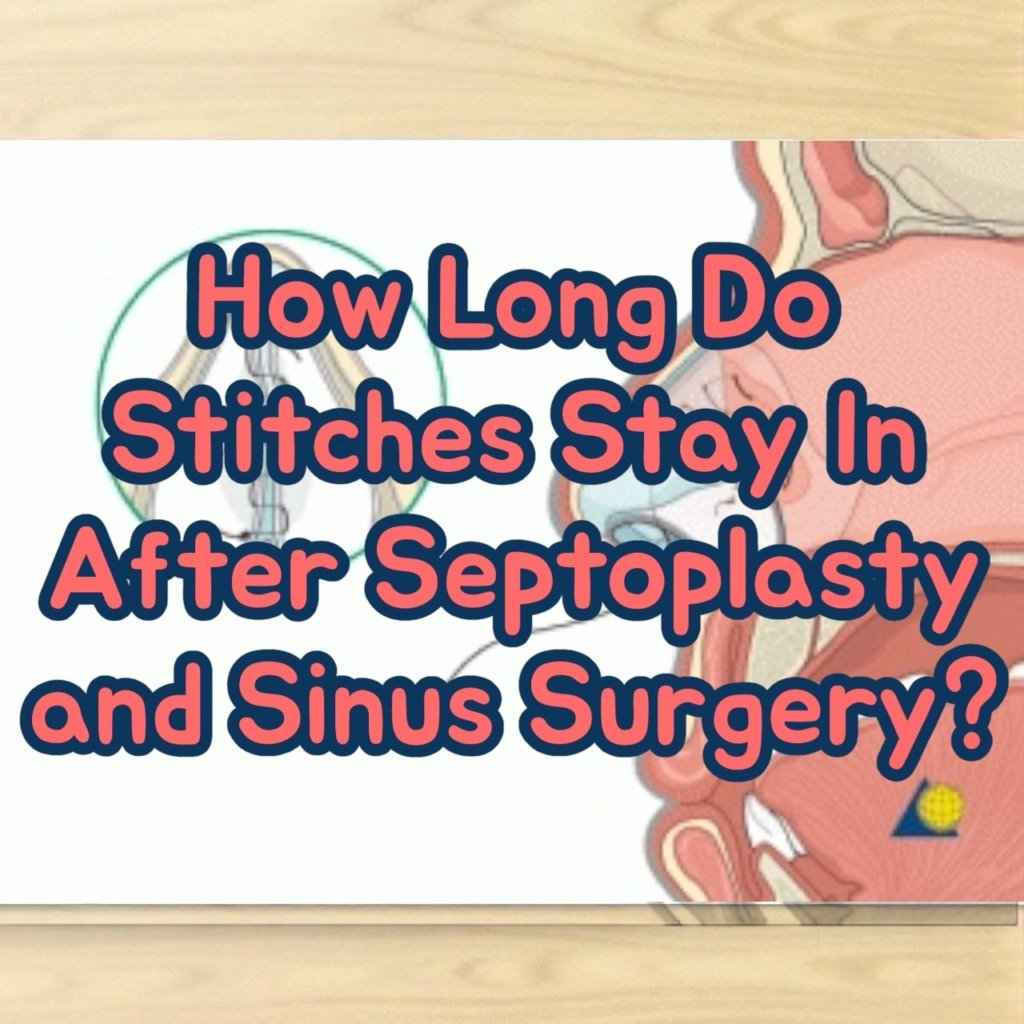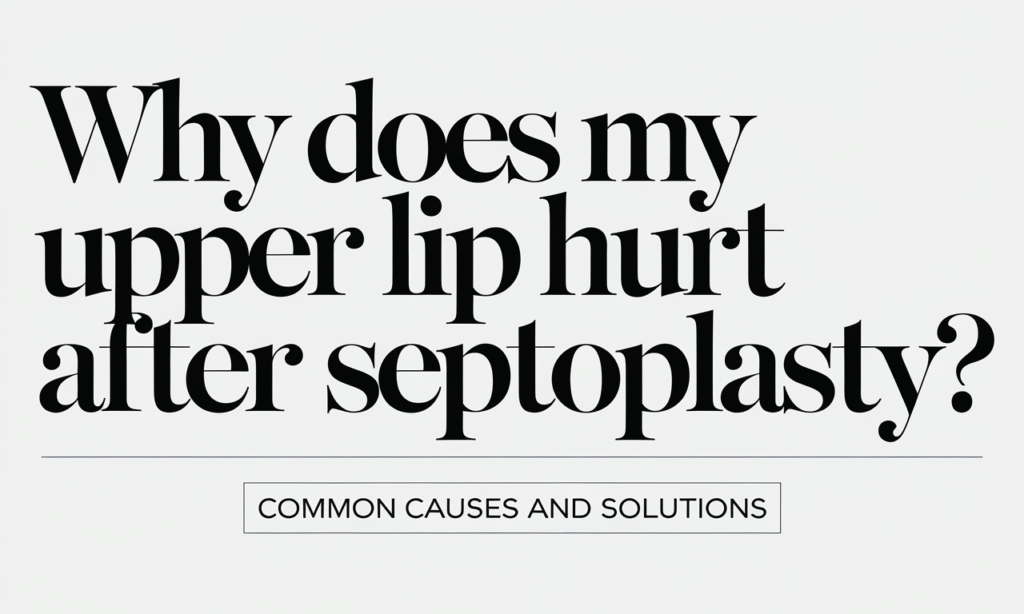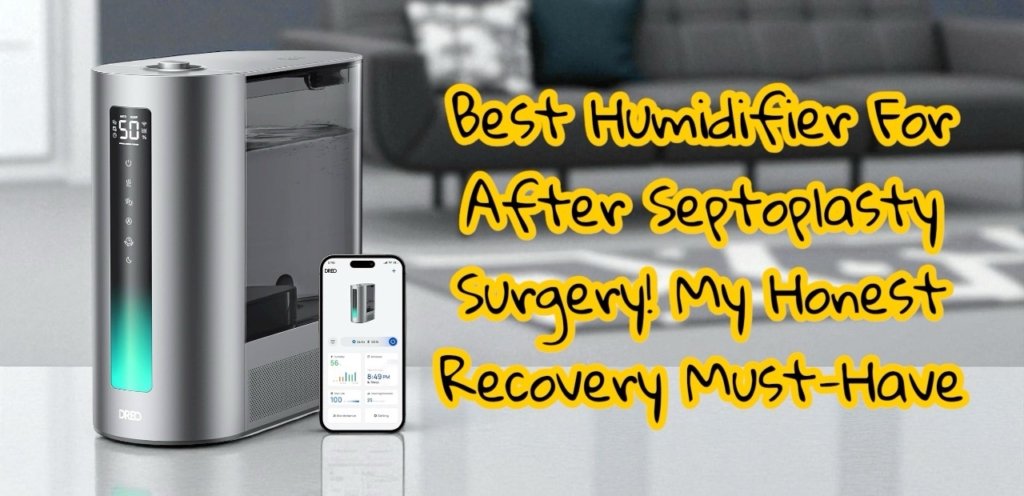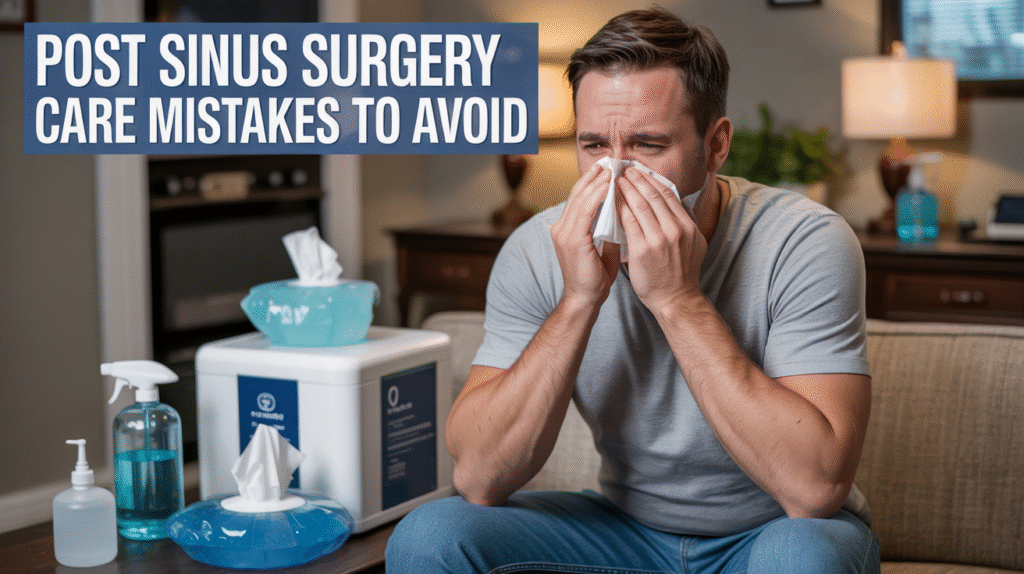
What People Get Wrong About Septoplasty Recovery
Septoplasty isn’t just a quick fix and done deal. I learned that firsthand. Before surgery, I read all kinds of advice about what to expect and how to recover. But nothing really prepared me for how rough it could get — especially when unexpected stuff hit, like pus buildup or that awful sinus flu feeling. This article isn’t some fluffy list of dos and don’ts. It’s from someone who’s been through the rough parts and wants to lay out the real septoplasty recovery mistakespeople make — including the ones I made, and the ones you can avoid.
Mistake 1: Thinking You’ll Be Back to Normal in a Few Days
If you think septoplasty recovery is like a long weekend with some swelling… yeah, think again. I had the surgery on a Tuesday, and by that weekend I wasn’t anywhere near better. In fact, things took a turn. Even after my stents were removed the following Monday, I started feeling worse — not better. It felt like I had the worst sinus infection or flu ever.
Recovery takes more than a few days. There might be good hours or even good days… but also major setbacks. That’s why it’s key to go in with realistic expectations and give yourself grace. You won’t be “normal” by the weekend, and that’s okay.
For anyone preparing for surgery, here’s something that helped me:
👉 Why You Should Trim Nose Hair Before Septoplasty 👈 — Trust me, I learned this the awkward way.
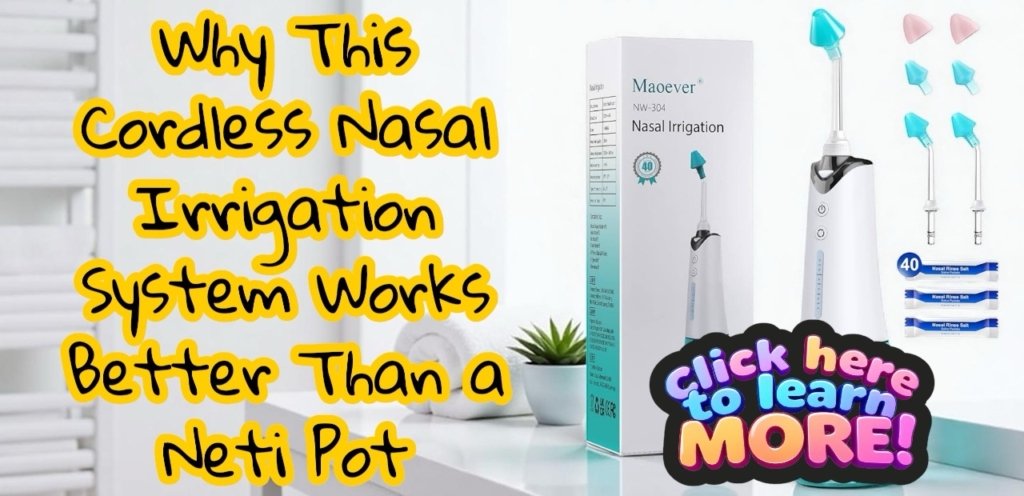
Mistake 2: Not Using the Right Nasal Irrigation Tools
After the surgery, you’re told to rinse your nose regularly. Sounds simple, right? But if you use the wrong kind of rinse bottle or neti pot, it either hurts like crazy or just doesn’t work at all.
I’ve personally tried a few, and some just sprayed too forcefully or were hard to aim properly. But I finally found electric sinus rinse machines that didn’t make me wince every time I used them.
🔹 This one was a game changer
🔹 And this other cordless system worked just as well with more flexibility
Don’t just grab a random neti pot. Some of them made things worse for me. Go with one that’s comfortable, effective, and made for post-surgery care.
Mistake 3: Ignoring Signs of Infection
Here’s where things got scary. About a week after surgery, I still felt awful — way beyond “normal recovery.” Sinus pressure, feeling like I had the flu, and just not getting better even with antibiotics. I called, expecting them to tell me to just wait it out. But thankfully, my ENT actually called back and wanted to see me right away.
When I went in, he numbed me up, checked my septum… and found a pocket of pus that had built up inside. He had to cut into the area and drain it right then and there. Turned out there may have even been a cyst in there.
I learned this: If you feel worse instead of better, call. Don’t wait.

Mistake 4: Rushing to Blow Your Nose
One of the biggest septoplasty recovery mistakes I nearly made was trying to blow my nose too soon. Everything feels stuffy and blocked, so your natural instinct is to just clear it out. But that can cause damage, push blood or pus into places it shouldn’t be, or even re-open surgical wounds.
If you need to clean your nose, there’s a safe way to do it — and I wrote a full guide on that too:
➡️ Best Way to Clean Your Nose After Septoplasty (Safely at Home)
Don’t make the mistake of rushing things. It’s not worth it. Gentle is the name of the game.
Mistake 5: Skipping Your Follow-Up Appointment
When you’re finally starting to feel even a little better, it’s tempting to cancel that follow-up visit. Maybe you don’t want to drive, maybe you’re just over it. But don’t skip that appointment.
If I hadn’t gone to mine, I would’ve never known about the pus pocket that was building up. The ENT was able to catch it just in time and treat it before it got worse. Septoplasty isn’t just “set it and forget it” — your ENT needs to physically look inside and see how your healing is going.
If you’ve got stents, they usually get removed at that first follow-up too. You won’t want to miss that.

Mistake 6: Thinking Antibiotics Will Solve Everything
Antibiotics can help in some cases, but they’re not a magic fix. After my septoplasty, I was put on a strong antibiotic right away. I figured, okay cool, this’ll knock out any infection and I’ll bounce back fast.
But when I kept feeling worse, I found out the antibiotic alone wasn’t enough. The real problem was a physical pocket of pus that needed to be drained. No pill was going to fix that.
It taught me this: antibiotics are only part of the solution. They help, sure, but if something deeper is going wrong (like swelling, fluid buildup, or post-op inflammation), you’ve got to get checked in person. That’s why tools like the right sinus rinse system matter so much — you can actually get ahead of problems before they require more serious care.
Mistake 7: Using Cheap Rinse Bottles or Neti Pots
I know it seems like a small thing, but not all nasal rinse bottles are the same. I used some of those freebie-style bottles at first and they either leaked, shot too hard, or felt completely ineffective. It was frustrating. When you’ve got soreness, healing tissue, and pressure already… the last thing you want is a harsh stream blasting into your nose or a bottle that doesn’t work at all.
After trial and error, I found this electric machine that didn’t feel like torture. And for more flexibility, this cordless one was a solid backup.
The right tool helps healing. The wrong one just causes more pain. Don’t cheap out on this step.

Mistake 8: Expecting a Perfect Result
Let’s be real — even if the surgery “works,” you might not feel perfect afterward. Septoplasty isn’t a miracle switch. It can make breathing better, yes. It can help reduce sinus issues. But it doesn’t mean you’ll never get congestion again or that your nose will feel brand new forever.
For me, recovery had ups and downs. There were days I wondered if I made the right choice. Some days felt worse before better. But overall, it gave me relief I couldn’t have had otherwise.
Set realistic expectations. Celebrate the small wins like being able to breathe more clearly, sleep better, or avoid constant sinus infections. And keep up with smart post-surgery care so those wins last.
Mistake 9: Ignoring the Warning Signs That Something’s Wrong
It’s easy to second-guess yourself after surgery. Is this pain normal? Is this much drainage okay? Should I be this tired? I did the same thing — for days. I convinced myself I was just being dramatic, that what I was feeling was “probably normal.”
But my biggest mistake? Waiting too long to say something.
The swelling under my eye, the pressure, the weird pain in one side of my face — those were all warning signs. When I finally got help, I learned I had a pocket of infection that needed to be physically drained. That’s not something you can just tough out.
If your gut says something’s wrong — listen to it. It’s better to be safe than end up back in the ENT chair with tools shoved in your nose again (trust me on that one).

Mistake 10: Comparing Your Recovery to Others Online
You’ll see stories all over the internet: “I felt great after 3 days!” or “I didn’t even need pain meds!” If that’s not your experience, it’s easy to spiral.
But here’s what I learned: everybody’s nose is different, and your healing timeline isn’t going to match someone else’s perfectly. Some people get lucky with smooth recoveries. Others (like me) hit a few bumps in the road — and still end up healing just fine.
The worst thing you can do? Assume you’re failing because someone else had an easier time. Their story isn’t yours. And most people don’t post about the rough parts anyway.
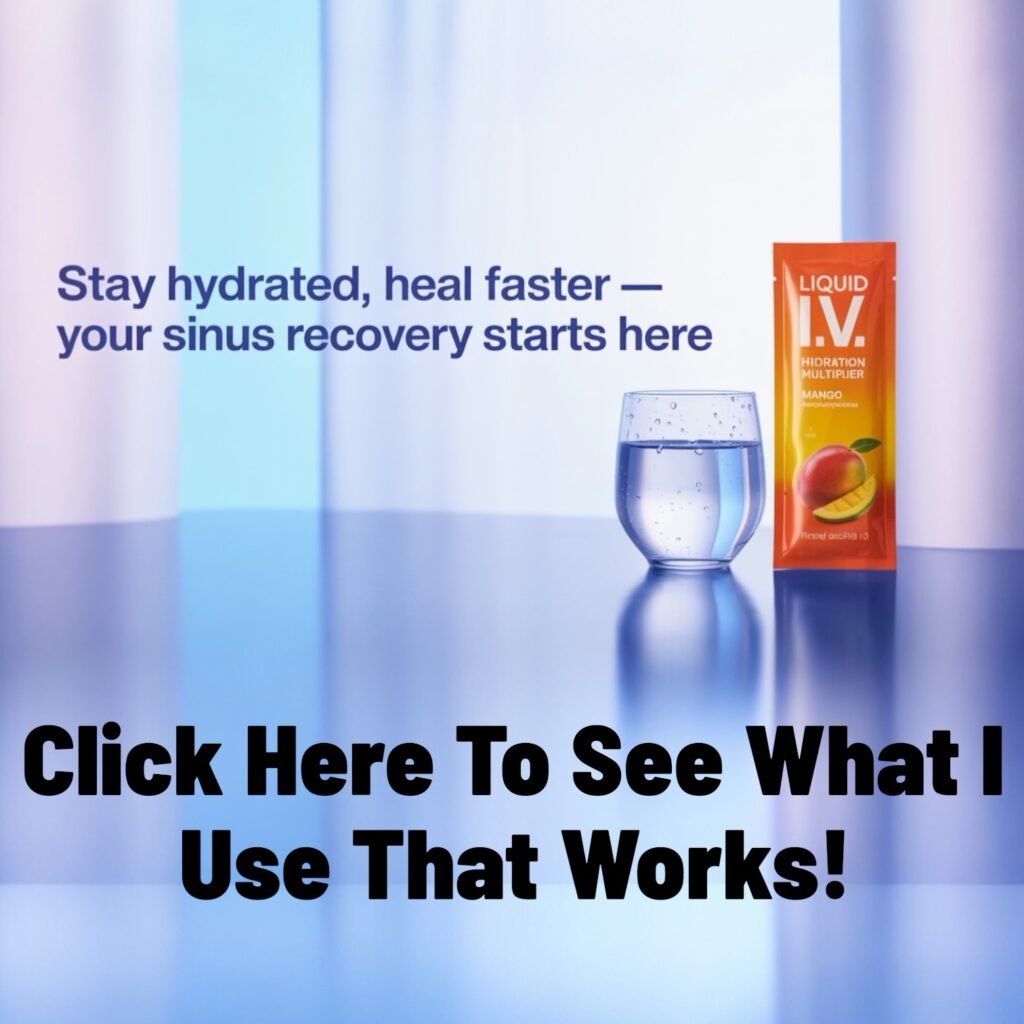
Bonus Tips for a Smarter Recovery
Here’s a quick, raw list of bonus tips I didn’t get to expand on earlier — all based on what I actually went through:
- Use a humidifier, especially at night. It keeps things from drying out and crusting too much. You can see our top choices for humidifiers here.
- Stay away from dusty areas, cleaning sprays, and allergens.
- Don’t laugh too hard for the first week. Seriously — I laughed once and regretted it instantly.
- Sleep slightly elevated — stacking a couple pillows helped ease pressure.
- Salt pack quality matters — some cheap ones felt way harsher on my nose. Stick to the reputable ones.
- Track your drainage color and thickness — weird changes could mean infection.
- Numbness is normal, especially around your nose and teeth — mine lasted weeks.
- Don’t overthink every symptom, but do stay aware.
- STAY HYDRATED!
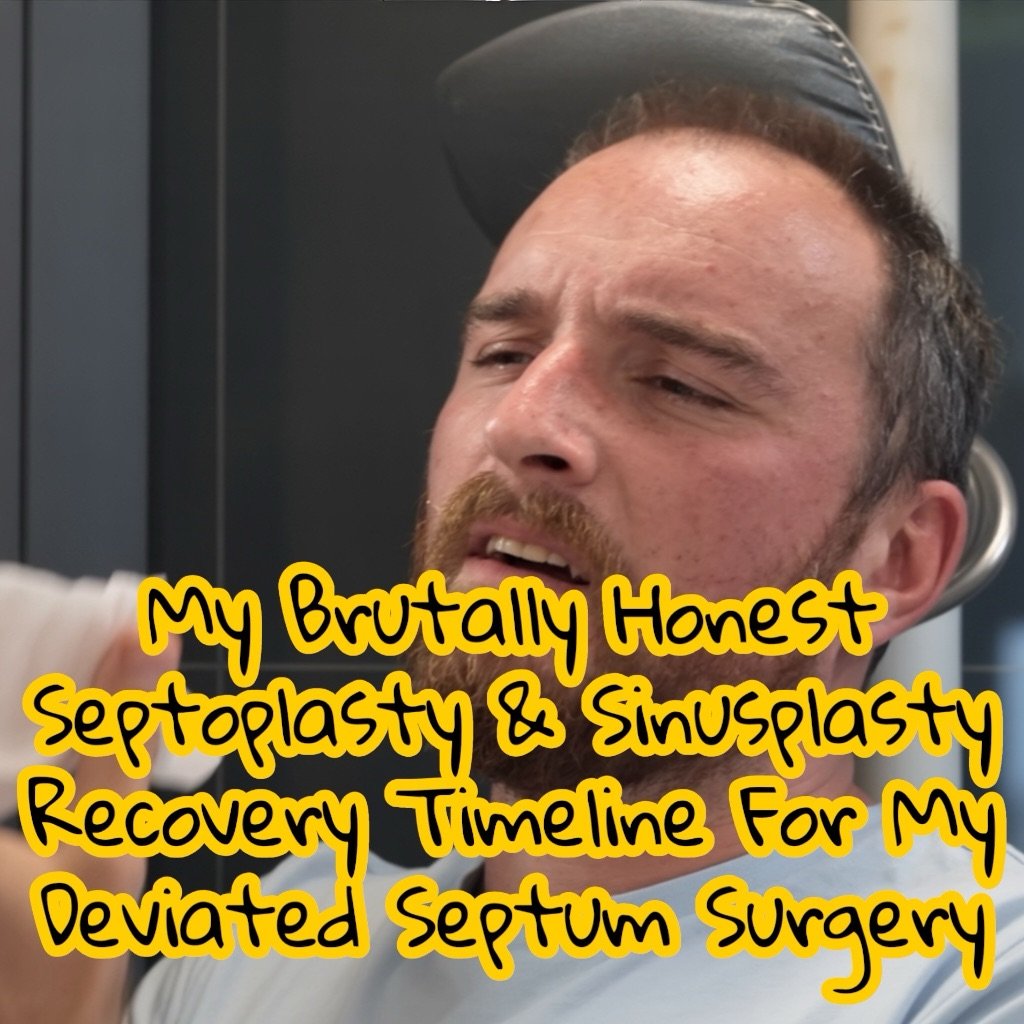
What Helped Me the Most During Septoplasty Recovery
Looking back, I definitely made some mistakes — mostly from not knowing better. But there were also a few things that seriously helped me through recovery, especially once I started doing things the right way.
One big one was switching to a cordless nasal rinse machine. I used this nasal irrigation system on Amazon, and it made a night-and-day difference. It came with 6 different tips and 40 salt packs — and the gentler pressure was way better than the old neti pot method that just made things worse for me. If you’re curious how it compares to other options, I broke it down here: Why This Cordless Nasal Irrigation System Works Better Than a Neti Pot.
Another helpful tool was this Electric Sinus Rinse Machine. It didn’t sting, wasn’t overly aggressive, and actually worked without causing more irritation. You can read the full breakdown here if you’re wondering if it’s worth it: Best Electric Sinus Rinse Machine That Actually Works and Doesn’t Hurt.
And honestly, one of the most important things I figured out later was how to clean your nose properly after septoplasty without doing damage. That was a big turning point for me. If you’re unsure how to do it safely at home, I walk through what finally worked for me step by step: Best Way to Clean Your Nose After Septoplasty Safely at Home.
Septoplasty recovery can be rough — especially if you feel like no one told you what to expect. I learned some lessons the hard way, but hopefully, you don’t have to. If you’re in the middle of it right now, just take it one day at a time. Rest when you need to. Speak up if something doesn’t feel right. And don’t feel bad if your recovery isn’t picture-perfect — mine sure wasn’t, and I made it through.
As an Amazon Associate we earn from qualifying purchases through some links in our articles.
